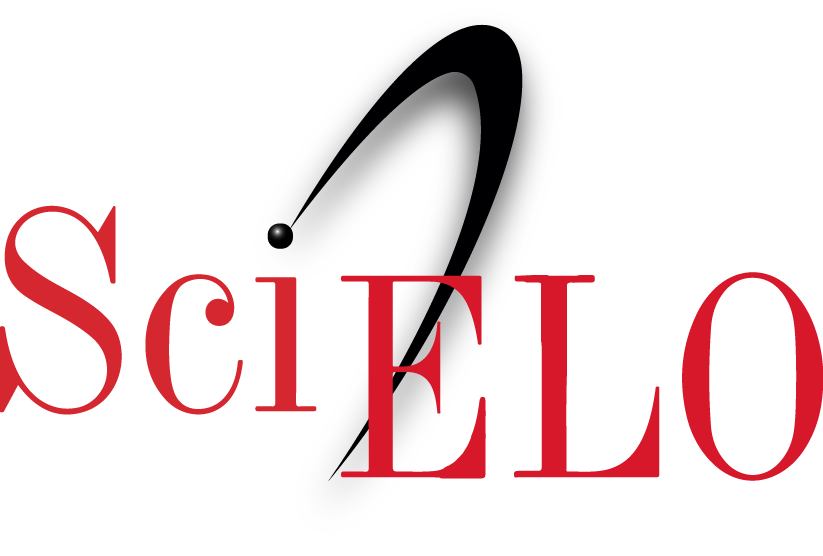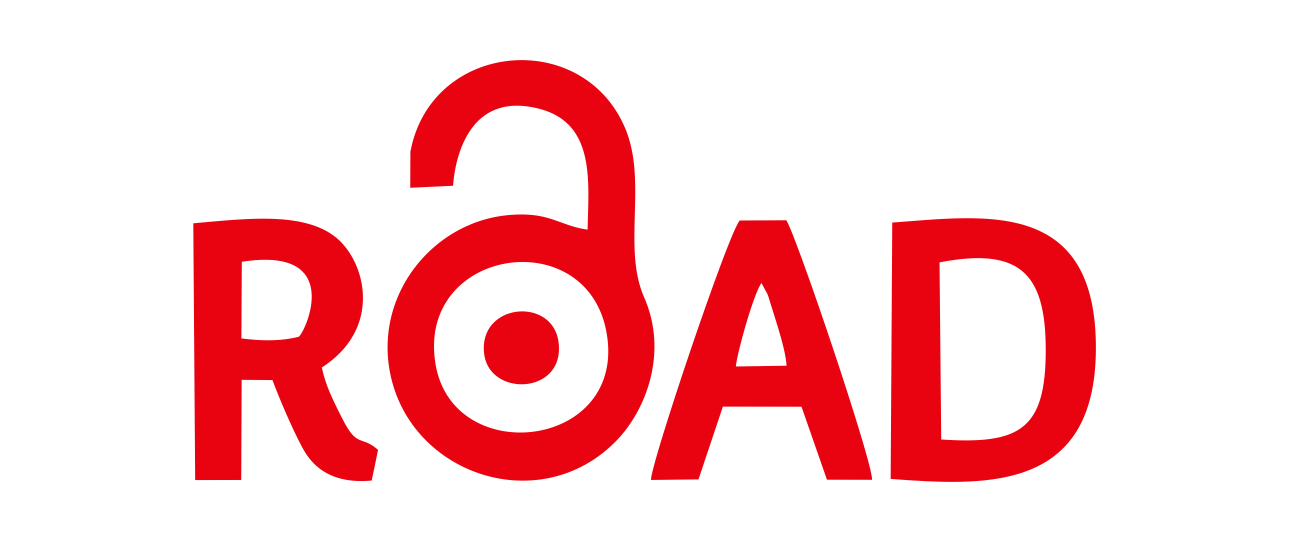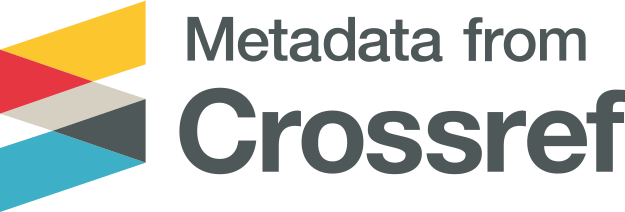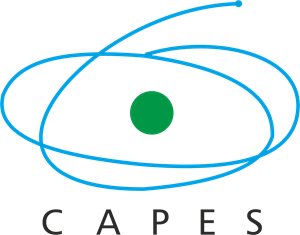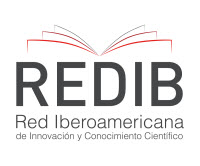Capacidad dinámica de adaptación
Palabras clave:
Capacidad Dinámica de Adaptación; Flexibilidad Estratégica; Flexibilidad Intelectual; Resiliencia; Organización Ambidiestra.Resumen
Este artículo presenta un recorrido por la literatura publicada sobre capacidades dinámicas de adaptación, empezando por determinar los antecedentes, realizado una aproximación al concepto de capacidad dinámica de adaptación; la evolución del concepto de capacidad de adaptación, las dimensiones de la capacidad de adaptación, que se concretan en seis: Flexibilidad estratégica, con cinco (5) categorías: Variedad de marcos de problemas; Multi-actor, multi-nivel, multi-sector; Diversidad de soluciones; Redundancia (duplicación); la dimensión de Flexibilidad intelectual, con cuatro (4) categorías: Confianza; Aprendizaje simple; El aprendizaje de doble bucle; Discusión de dudas; la dimensión de Resiliencia, con tres (3) categorías: continuo acceso a la información; Actúa de acuerdo para planificar; la capacidad para improvisar; la dimensión de Liderazgo, con tres (3) categorías: Visionario; Emprendedor; Colaborador; la dimensión de Recursos, con tres categorías: Autoridad; Capital humano; Recursos financieros; y la Gobernabilidad con cuatro (4) categorías: Legitimidad; Equidad; Capacidad de respuesta; Rendición de cuentas.Citas
Andersson, M., Mol, A.P.J., (2002). The Netherlands in the UNFCCC Process – Leadership between Ambition and Reality. International Environmental Agreements 2, 49-68.
Argyris, C., (1990). Overcoming organizational defenses: Facilitating organizational learning. Allyn and Bacon, Boston.
Armitage, D., (2008). Governance and the commons in a multi-level world. International Journal of the Commons 2(1), 7–32.
Arnold, J., y Cohen, L. (2008). The psychology of careers in industrial and organizational settings: A critical but appreciative analysis. In G.P. Hodgkinson y J.K. Ford (Eds.), International Review of Industrial and Organizational Psychology (Vol. 23, pp. 1-44).
Barnett, W. P., y G. R. Caroll (1995), Modelling internal organizational change, Annual Review of Sociology 21, pp. 217 236.
Barnett, W. P., y J. Freeman (2001), Too much of a good thing? Product proliferation and organizational failure, Organization Science 12, pp. 539-558.
Berntson, E., Sverke, M., y Marklund, S. (2006). Predicting perceived employability: Human capital or labor market opportunities? Economic and Industrial Democracy, 27, 223-244.
Biermann, F., (2007). ‘Earth system governance’ as a crosscutting theme of global change research. Global Environmental Change 17, 326-337.
Botchway, F.N., (2001). Good Governance: The Old, the New, the Principle, and the Elements. Florida Journal of International Law 13(2), 159-210.
Brown, S. L., y K. M. eisenhardt (1997), «The art of continuous change: Complexity theory and time-paced evolution in relentlessly shifting organizations», Administrative Science Quarterly 42, pp. 1-34.
Burgleman, R. A. (1991). Intraorganizational ecology of strategy making and organizational adaptation: theory and research, Organization Science 2, pp. 239-262.
Burgleman, R. A. (2002), «Strategy as vector and the inertia of coevolutionary lock-in», Administrative Science Quarterly 47, pp. 325-357.
Burnard, K. and Bhamra, R. and Tsinopoulos, C. (2018) 'Building organizational resilience:four configurations.', IEEE transactions on engineering management. http://ieeexplore.ieee.org/xpl/aboutJournal.jsp?punumber=17
Busquets, J., Rodon, J., y Wareham, J. (2009). Adaptability in smart business networks: An exploratory case in the insurance industry. Decision Support Systems, 47, 287-296.
Carpenter, S., Walker, B., Anderies, J. M., y Abel, N., (2001). From Metaphor to Measurement: Resilience of What to What? Ecosystems 4(8), 765-781.
Chakravarthy, B.S. (1982). Adaptation: A promising metaphor for strategic management. The Academy of Management Review, 7(1), 35-44.
Child, J. (1997). Strategic choice in the analysis of action, structure, organizations and environment: Retrospect and prospect, Organization Studies 18, pp. 43-76.
Child, J., y C. smith (1987). The context and process of organizational transformation – Cadbury limited in its sector», Journal of Management Studies 24, pp. 565-593.
Christensen, C. M. (1997). The Innovator’s Dilemma: When New Technologies Cause Great Firms to Fail, Boston, MA: Harvard Business School Press.
DiMaggio, P. J., y W. W. Powell (1983). The iron cage revisited: Institutional isomorphism and collective rationality in organizational fields, American Sociological Review 48, pp. 147- 160.
Duit A., Galaz, V., (2008). Governance and complexity – emerging issues for governance theory. Governance: an international journal of policy, administration and institutions 21(3), 311-335.
Farjoun, M. (2010), Beyond dualism: Stability and change as a duality, Academy of Management Review 35, pp. 202-225.
Folke, C., Colding, J., Berkes, F., (2003). Synthesis: building resilience and adaptive capacity in social–ecological systems, in: Berkes, F., Colding, J., Folke, C. (Ed.), Navigating social–ecological systems. Cambridge University Press, Cambridge, UK, pp 252–387.
Folke, C., Hahn, T., Olsson, P., Norberg, J., (2005). Adaptive governance of social-ecological, systems. Annual Review of Environment and Resources 30(1), 441-473.
Fraga S. (2014) Organizational adaptability: a conceptual contribution for today’s organizations, in REOP. Vol. 25, nº1, 1º Cuatrimestre, 2014, pp. 128 – 136.
Furnham, A. (1997). The psychology of behavior at work. The individual in the organization. Hove East Sussex: Psychology Press, Publishers.
Furnham, A. (2005). The psychology of behavior at work. The individual in the organization (2nd ed.). Hove East Sussex: Psychology Press, Publishers.
Garzón, M.A. (2015). Modelo de capacidades dinámicas. Revista Dimensión Empresarial, vol. 13, núm. 1, p. 111-131.
Goldfinch, S., Hart. P. ’t, (2003). Leadership and institutional reform: engineering macroeconomic policy change in Australia. Governance 6(2), 235-270.
Greenwood, R., y C. R. Hinings (1996), «Understanding radical organizational change: bringing together the old and new institutionalism», Academy of Management Review 21, pp. 1022 1054.
Grubb, M., Gupta, J., (2000). Towards a Theoretical Analysis of Leadership, in: Gupta, J., Grubb, M. (eds.), Climate Change and European Leadership: A Sustainable Role for Europe. Kluwer Academic Publishers, Dordrecht, pp.15-24.
Gupta J, Termeer K, Klostermannc J, Meijerinkd S, van den Brinkd M, Jonge P, Nooteboomf, S. and Bergsmaa E (2010) The Adaptive Capacity Wheel: A Method to Assess the Inherent Characteristics of Institutions to Enable the Adaptive Capacity of Society, Environmental Science y Policy Volume 13, Issue 6, October 2010, Pages 459–471.
Haddad, B., (2005). Ranking the adaptive capacity of nations to climate change when sociopolitical goals are explicit. Global Environmental Change 15, 165-176.
Hamel G. (2012) Lo que importa ahora, Cómo triunfar en un mundo de cambios implacables, comnpewtencia feroz e innovación sin barreras. Editorial Norma., Bogotá D.C. 149-164
Hamel G. y Valinkas L. (2003) The Quest for Resilience, Harvard Business Review, 81(9), 52-65.
Holland, J.L. (1959). A theory of vocational choice. Journal of Counseling Psychology, 6, 35-44.
Katayama, H. y Bennett, D. (1999). Agility, adaptability and leanness: A comparison of concepts and a study of practice. International Journal of Production Economics, 60-61, 43-51.
Kuijpers, M.A.C.T., y Scheerens, J. (2006). Career competences for the modern career. Journal of Career Development, 32, 303-319.
Lam, A. (2000), «Tacit knowledge, organizational learning, societal institutions: an integrated framework», Organization Studies 21, pp. 487-513.
March, J. G. (1991), «Exploration and exploitation in organizational learning», Organization Science 2, pp. 71-87.
Marlin, A., Olsen, L., Bruce, D., Ollerhead, J., Singh, K., Heckman, J., Walters, B., Meadus, D., Hanson, A., (2007). Examining Community Adaptive Capacity to Address Climate Change, Sea Level Rise, and Salt Marsh Restoration in Maritime Canada. Submitted to the Climate Change Impacts and Adaptations Program, Mount Allison Coastal Wetlands Institute and the Rural and Small Town Programme, Mount Allison University, Sackville.
Marshall, N.A., Marshall, P.A., (2007). Conceptualising and operationalising social resilience within commercial fisheries in Northern Australia. Ecology and Society 12(1), [online] URL: http://www.ecologyandsociety.org/vol12/iss1/art1/
McKee, D. O.; Varadarajan, P.R.; Pride, W. M (1989) Strategic adaptability and firm performance: a market-contingent perspective. Journal of Marketing, Vol. 53, No 1, pp. 21-35.
Milman, A., Short, A., (2008). Incorporating Resilience into Sustainability Indicators: An Example for the Urban Water Sector. Global Environmental Change 18, 758-767.
Nelson, R., Kokic, P., Crimp, S., Martin, P., Meinke, H., Howden, S.M., de Voil, P., Nidumolu, U., (2010). The vulnerability of Australian rural communities to climate variability and change: Part II – Integrating impacts with adaptive capacity. Environmental Science y Policy 13, 18-27.
Nooteboom, S., (2006). Adaptive networks, the governance for sustainable development. Delft: Eburon.
O’Reilly, C. A., y M. L. Tushman (2004), «The ambidextrous organization», Harvard Business Review, abril, pp. 74-81.
O’Reilly, C. A., y M. L. Tushman (2008), «Ambidexterity as a dynamic capability: Resolving the innovator’s dilemmas», Research in Organizational Behavior 28, pp. 185-206.
Olsson, P., Folke, C., Berkes, F., (2004). Adaptive Co-Management for Building Resilience in Social-Ecological Systems. Environmental Management 34, 75-90.
Ormond, J.E., (1999). Human learning (3rd ed). Prentice-Hall, Upper Saddle River.
Ostrom, E., (2005). Understanding institutional diversity. Princeton University Press, Princeton, New Jersey.
Pahl-Wostl, C., (2009). A conceptual framework for analysing adaptive capacity and multilevel learning processes in resource governance regimes. Global Environmental Change 19, 354-365.
Pelling, M., High, C., (2005). Understanding Adaptation: What Social Capital Offer Assessments of Adaptive Capacity. Global Environmental Change 15, 308-319.
Pérez M. (2009) La relación entre la tecnología de la información, las prácticas de gestión de la calidad y el desarrollo de las capacidades dinámicas: una aproximación empírica. Tesis Doctoral, Universidad de Granada, España.
Pollit C., Bouckaert, G., (2000). Public Management Reform: A Comparative Analysis. Oxford University Press, Oxford.
Polsky, C., Neff, R., Yarnal, B., (2007). Building comparable global change vulnerability assessments: The Vulnerability Scoping Diagram. Global Environmental Change 17, 472-
Savickas, M.L. y Baker, D.B. (2005). The history of vocational psychology: Antecedents, origin and early development. In W.B. Walsh y M.L. Savickas (Eds.), Handbook of Vocational Psychology (3rd ed., pp. 15-50). Mahwah, NJ: Lawrence Erlbaum Associates.
Savickas, M.L. (2003). Toward a taxonomy of human strengths: Career counseling’s contribution to positive psychology. In W.B. Walsh (Ed.), Counseling psychology and optimal human functioning (pp. 229-249). Mahwah, NJ: Lawrence Erlbaum Associates.
Savickas, M.L. (2005). The theory and practice of career construction. In S. Brown y R. Lent (Eds.), Career development and counselling. Putting theory and research to work (pp. 42-70). NJ: Wiley.
Schneider B (2006) Resiliencia, cómo construir empresas en contextos de inestabilidad. Editorial Norma, Bogotá D.C.
Smit, B. y Pilifosova, O. (2001). Adaptation to climate change in the context of sustainable development and equity. In J.J. McCarthy, O.F. Canziani, N.A. Leary, D.J. Dokken, y K.S. White (Eds.), Climate Change 2001: Impacts, Adaptation and Vulnerability (pp. 877-912). Cambridge: Cambridge University Press.
Smit, B., Burton, I., Kleinand, R., Wandel, J., (2000). An anatomy of adaptation to climate change and variability. Climate change 45, 223-251.
Smit, B., Burton, I., Kleinand, R., Wandel, J., (2000). An anatomy of adaptation to climate change and variability. Climate change 45, 223-251.
Teece, D. (2007), «Explicating dynamic capabilities: The nature and micro-foundations of (sustainable) enterprise performance», Strategic Management Journal 28, pp. 1319-1350.
Termeer, C.J.A.M., (2009). Water professionals and public leadership. Irrigation and Drainage 58, S212-S216.
Tierney, K., Bevc, C., Kuligowski, E., (2006). Metaphors Matter: Disaster Myths, Media Frames, and Their Consequences in Hurricane Katrina. The ANNALS of the American Academy of Political and Social Science 604, 57-81.
Tuominen, M., Rajala, A., y Möller, K. (2004). How does adaptability drive firm innovativeness? Journal of Business Research, 57, 495-506.
Tushamn, M. L., W. K. smith y R. C. Wood et al. (2010), «Organizational designs and innovation streams», Industrial and Corporate Change. Identificador de objeto digital (doi): 10.1093/icc/ dtq040.
Verweij, M., Thompson, M., (2006). Clumsy solutions for a Complex World. Governance, Politics and Plural Perceptions. Palgrave Macmillan, Basingstoke.
WeicK, K. E. (1979), The Social Psychology of Organizing, 2.ª ed., Reading, MA: Addison-Wesley.
WeicK, K. E. (1995), Sensemaking in Organizations, Thousand Oaks, CA: Sage.
Weick, K.E., Sutcliffe, K.M., (2001). Managing the Unexpected: Assuring High Performance in an Age of Complexity. Jossey-Bass, San Francisco.
Yohe, G., Tol, R.S.J., (2002). Indicators for social and economic coping capacity – moving toward a working definition of adaptive capacity. Global Environmental Change 12, 25- 40.
Publicado
Cómo citar
Número
Sección
Licencia
Derechos de autor 2018 Manuel Alfonso Garzón CastrillonAtribución-NoComercial 2.5 Argentina (CC BY-NC 2.5 AR)
Usted es libre de:
- Compartir - copiar y redistribuir el material en cualquier medio o formato
- Adaptar - remezclar, transformar y construir a partir del material
La licenciante no puede revocar estas libertades en tanto usted siga los términos de la licencia
Bajo los siguientes términos:
- Atribución - Usted debe dar crédito de manera adecuada, brindar un enlace a la licencia, e indicar si se han realizado cambios. Puede hacerlo en cualquier forma razonable, pero no de forma tal que sugiera que usted o su uso tienen el apoyo de la licenciante.
- NoComercial - Usted no puede hacer uso del material con propósitos comerciales.
- No hay restricciones adicionales - No puede aplicar términos legales ni medidas tecnológicas que restrinjan legalmente a otras a hacer cualquier uso permitido por la licencia.
Avisos:
No tiene que cumplir con la licencia para elementos del material en el dominio público o cuando su uso esté permitido por una excepción o limitación aplicable.
No se dan garantías. La licencia podría no darle todos los permisos que necesita para el uso que tenga previsto. Por ejemplo, otros derechos como publicidad, privacidad, o derechos morales pueden limitar la forma en que utilice el material.





